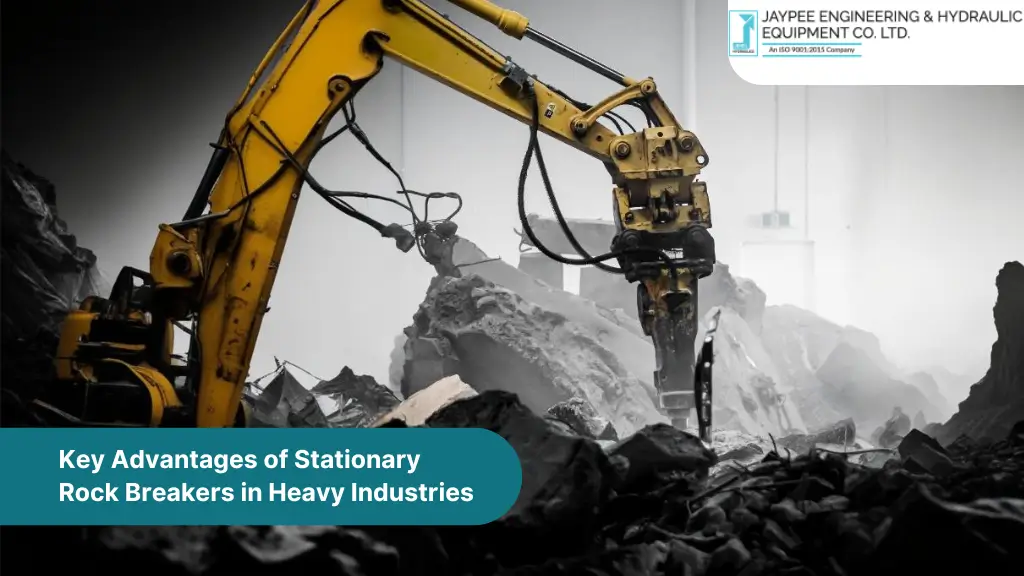Introduction
Handling large rock formations is a fundamental challenge in mining, quarrying, and infrastructure development. Traditional methods such as blasting and manual rock-breaking not only pose safety risks but also introduce operational inefficiencies. With industries demanding more precision, automation, and sustainability, the shift towards stationary rock breakers is gaining momentum. These advanced systems provide reliable, controlled rock fragmentation while enhancing efficiency, safety, and environmental compliance.
1. Consistent Performance and Continuous Operations
Industrial operations rely on uninterrupted material processing to meet production targets. Stationary rock breakers eliminate reliance on explosives and manual labor, allowing for continuous rock fragmentation without unnecessary delays. Unlike drilling-based techniques that require repeated setup and execution, a stationary rock breaker operates in real time, breaking down oversized materials efficiently before they obstruct crushers or conveyors.
Additionally, these systems are integrated with automated control mechanisms, ensuring precision-driven impact tailored to different rock types. Their ability to adapt to varying material densities makes them indispensable in industries where accuracy and reliability are paramount.
2. Structural Integrity and Stability
Unlike mobile rock breakers that must be repositioned frequently, stationary rock breakers offer fixed, stable mounting that enhances operational reliability. Their heavy-duty reinforced structures are designed to withstand extreme impact forces while maintaining long-term durability in demanding work environments.
Mines and quarries often experience harsh operational conditions, including high-intensity vibrations, moisture exposure, and fluctuating temperatures. Stationary rock breakers, built with high-strength steel and wear-resistant components, ensure structural integrity even in these rugged environments. This results in minimal mechanical failures and extended equipment lifespan.
3. Energy Efficiency and Sustainable Operations
Heavy industries are increasingly focusing on sustainability and energy conservation. Compared to high-impact blasting, stationary rock breakers optimize energy consumption by delivering precise, localized rock fragmentation rather than indiscriminate force.
Additionally, these machines help reduce dust emissions, noise pollution, and ground vibrations, making them an eco-conscious alternative to traditional methods. By minimizing environmental disruption, they align with global sustainability initiatives and regulatory compliance standards, making them a preferred choice for industries committed to green operations.
4. Integration with Smart Technologies
The industrial sector is evolving with automation and smart technologies, and stationary rock breakers are no exception. Modern units come equipped with IoT-driven monitoring and data analytics, allowing companies to track real-time equipment performance and schedule predictive maintenance.
These systems also enable remote operation, reducing the need for direct human involvement in high-risk areas. Automated controls optimize rock-breaking efficiency while providing operators with instant feedback on system health, ensuring peak performance with minimal downtime.
5. Precision and Versatility in Rock Fragmentation
Different industries require varied approaches to rock breaking, depending on the material composition and project scope. Stationary rock breakers feature targeted impact mechanisms, allowing for precision-controlled fragmentation of dense rock formations, aggregate materials, and mineral deposits.
These machines are widely used in tunneling, bridge construction, and roadworks, offering seamless adaptability to infrastructure projects. Customizable impact settings enable them to handle different rock hardness levels, making them an indispensable tool across multiple industrial sectors.
6. JEHEL’s Engineering Excellence in Stationary Rock Breakers
As a leader in material handling and rock-breaking solutions, JEHEL has set industry benchmarks with its high-performance stationary rock breakers. Engineered for maximum durability and efficiency, JEHEL’s systems incorporate cutting-edge hydraulic technology, ensuring seamless operation in demanding environments.
JEHEL has successfully deployed stationary rock breakers in large-scale mining and infrastructure projects, reinforcing its reputation for precision-driven engineering and industrial reliability. By offering customized solutions that cater to specific industry needs, JEHEL continues to be a trusted partner in heavy industry advancements.
Conclusion
The adoption of stationary rock breakers is transforming heavy industries by delivering unparalleled efficiency, safety, and sustainability. Unlike traditional methods that rely on explosive force, these systems provide controlled, continuous rock fragmentation with minimal environmental impact.
JEHEL’s commitment to engineering excellence and smart integration ensures that businesses benefit from cutting-edge, future-ready solutions. As industries evolve towards automated and eco-conscious practices, JEHEL’s stationary rock breakers remain a cornerstone for enhanced productivity and long-term operational success.


